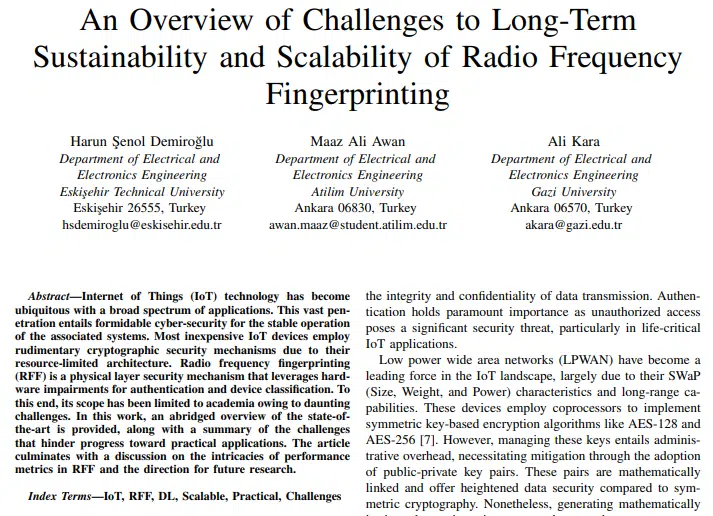The Internet of Things (IoT) is transforming industries with its plethora of applications, from smart cities to healthcare. However, this rapid proliferation comes with a pressing need for additional cybersecurity needs to ensure stable and resilient operations. Resource-constrained IoT devices often rely on basic cryptographic mechanisms, allowing innovative solutions like Radio Frequency Fingerprinting (RFF) to thrive and enhance physical layer security. As part of European Union COST Action, this study dives into the current state-of-the-art in RFF, a technique that utilizes unique hardware characteristics for device authentication and classification. Key Takeaways: Challenges in Real-World Deployment: While RFF has shown promise in academic settings, its practical applications are limited by technological barriers. There is a burgeoning need to deliberate the potential CONOPS (concept of operation) and operational scenarios encountered in real world deployment. The research sheds light on critical performance metrics and the complexities of evaluating RFF systems. By addressing these challenges, the study lays a foundation for advancing RFF from theory and controlled environment to practical implementation, enabling its integration into secure IoT ecosystems. By connecting this work to the COST action, we aim to foster collaboration across Europe to develop cutting-edge security solutions for networks of the future.

